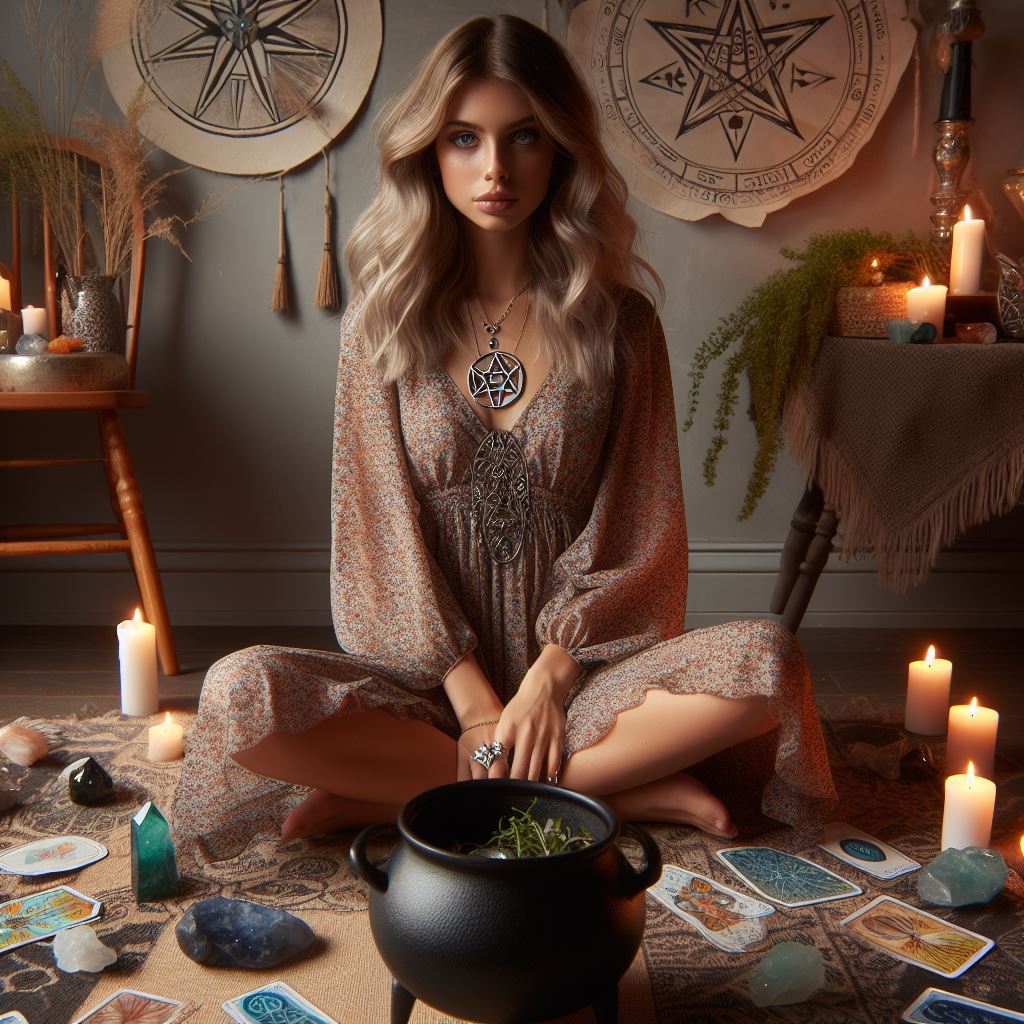
One prevalent misunderstanding about modern witchcraft is that it involves dark sorcery or malign intentions. Unlike the cliched portrayals in media and folklore, contemporary witchcraft, often termed Wicca or pagan witchcraft, primarily centers on nature-based beliefs and practices, celebrating the seasons and harnessing natural energies. This spiritual path honors the Earth and usually involves rituals and ceremonies to connect with natural elements, which starkly contrasts with nefarious depictions in popular culture.
Some people believe practitioners of modern witchcraft engage in harmful magic or curse others. But this is not true. Many modern witches abide by the Wiccan Rede, an ethical guideline summed up by the phrase, “An it harm none, do what ye will.” This principle encourages actions that promote love and harmlessness. The commonly held image of a witch casting spells to cause harm significantly distorts their true, peaceful practices.
Diverse Witchcraft Practices
Exploring the varied practices within the witchcraft community reveals a rich tapestry of beliefs and rituals. Contemporary paganism includes a range of earth-based spiritual systems such as Druidry, Shamanism, and Wicca. Each of these paths has its own unique practices, deities, and understanding of the world.
Wicca draws heavily on the ceremonial magic of the late medieval period, alongside ancient pagan practices and modern ceremonial magic. Wiccans may celebrate eight major holidays (Sabbats), including Samhain, Beltane, and Mabon, which mark the changing seasons and cyclical nature of life. These celebrations are communal and deeply personal, tailored to the practitioners’ unique spiritual pathways.
Shamanic witchcraft, which integrates elements of shamanism and traditional witchcraft, focuses on direct contact with spirits and the healing arts. This branch often incorporates journeying to otherworldly realms, animal guides, and healing rituals, emphasizing personal spirituality and the healing of individuals and communities.
Contemporary Paganism and Its Rich Tapestry
Contemporary paganism is another umbrella term that encompasses a variety of spiritual and religious beliefs rooted in ancient traditions. It is a revival of pre-Christian, indigenous, folk, and polytheistic practices tailored to modern sensibilities. Unlike the structured religion of monotheistic practices, contemporary paganism offers a more fluid and personalized spiritual experience.
Polytheism, or the worship of multiple gods and goddesses, is common in contemporary paganism, featuring deities from a wide array of global mythologies. Some pagans may focus their practice around a specific cultural pantheon – such as Norse or Egyptian – while others blend elements from various traditions to create a personalized belief system.
Earth-centered spirituality is a core aspect, with a great reverence for the natural world seen as a reflection of the divine. This ecological mindfulness manifests in practices such as rituals in natural settings, the use of natural items like herbs and crystals, and eco-activism, reflecting a spiritual mandate to protect the planet.
Witch Stereotypes
One stereotype is the misconception of the “black hat witch.” Classic portrayals often depict witches as malevolent women with pointy hats and brooms. This stereotypical image has been perpetuated across various forms of media, from Shakespeare’s “Macbeth” to the modern “Harry Potter” series. In truth, witches come from all genders, appearances, and walks of life, and their practices focus more on spiritual and bodily health than on brooding malevolence.
Another stereotype involves the conflation of modern witchcraft with Satanism. Modern witchcraft and Wicca are not related to Satanism – a separate belief system that does not necessarily involve witchcraft. Wiccans do not believe in Satan, a figure rooted in Christian theology, and instead may worship a myriad of gods or nature itself. The misunderstanding likely stems from older, religious persecution and the vilification of pagan traditions.
The bizarre myth that witches perform sacrifices is wildly off-base. Modern witchcraft respects living beings and promotes a symbiotic relationship with nature. Rituals tend to involve offerings such as flowers, food, and incense rather than the archaic and misrepresented offerings of lore.
The Reality of Contemporary Witchcraft
Contemporary witchcraft, far from the dark, mysterious portrayal often depicted in media, is a diverse and spiritually enriching practice embraced by individuals worldwide. Its essence lies in promoting self-growth, personal responsibility, and a harmonious connection with nature. Unlike the stereotype of witches brewing potions in secluded cottages, modern practitioners engage in a variety of rituals tailored to their beliefs and lifestyles.
Central to contemporary witchcraft is the idea of adaptability. Each practitioner may have their own unique blend of rituals, incorporating elements of meditation, chanting, and spellcraft. These spells are not about wielding supernatural powers, but rather about manifesting intentions for practical purposes such as healing, protection, or enhancing love and positivity in one’s life.
The internet has revolutionized the way modern witches connect and interact. Now, digital platforms serve as hubs for sharing knowledge, experiences, and resources. Online forums, social media groups, and dedicated websites provide spaces for practitioners to seek advice, exchange ideas, and form communities regardless of geographical boundaries. This virtual networking fosters a sense of belonging and solidarity among witches worldwide.
Community building is a cornerstone of contemporary witchcraft. In addition to online interactions, many practitioners organize and participate in physical gatherings such as meetups, workshops, and festivals. These events offer opportunities for learning, celebration, and bonding with like-minded individuals. They may feature activities like group rituals, tarot readings, or discussions on witchcraft-related topics, further strengthening the sense of community among participants.
Another notable aspect of modern witchcraft is its emphasis on environmentalism and sustainability. Many practitioners view nature as sacred and strive to live in harmony with the Earth. This ethos manifests in eco-friendly practices such as using sustainable materials in rituals, practicing responsible foraging, and advocating for environmental causes. For witches, caring for the planet is not just a moral imperative but also a spiritual one, reflecting their reverence for the interconnectedness of all life.